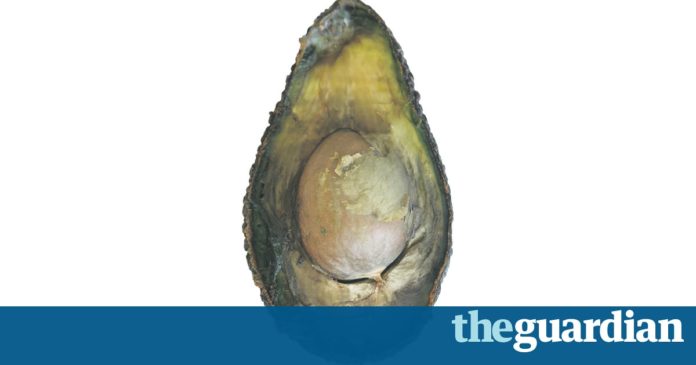The long read: The oh-so-Instagrammable food movement has been thoroughly debunked but it shows no signs of going away. The real question is why we were so desperate to believe it
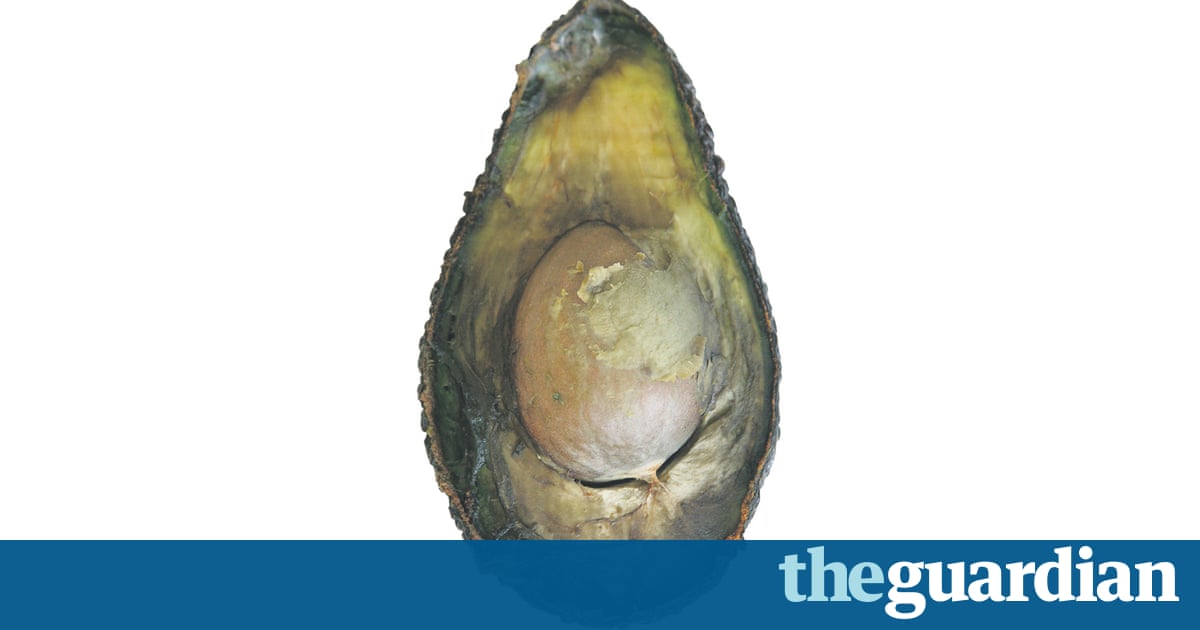
In the spring of 2014, Jordan Younger noticed that her hair was falling out in clumps. Not cool was her reaction. At the time, Younger, 23, believed herself to be eating the healthiest of all possible diets. She was a gluten-free, sugar-free, oil-free, grain-free, legume-free, plant-based raw vegan. As The Blonde Vegan, Younger was a wellness blogger in New York City, one of thousands on Instagram (where she had 70,000 followers) rallying under the hashtag #eatclean. Although she had no qualifications as a nutritionist, Younger had sold more than 40,000 copies of her own $25, five-day cleanse programme a formula for an all-raw, plant-based diet majoring on green juice.
But the clean diet that Younger was selling as the route to health was making its creator sick. Far from being super-healthy, she was suffering from a serious eating disorder: orthorexia, an obsession with consuming only foods that are pure and perfect. Youngers raw vegan diet had caused her periods to stop and given her skin an orange tinge from all the sweet potato and carrots she consumed (the only carbohydrates she permitted herself). Eventually, she sought psychological help, and began to slowly widen the repertoire of foods she would allow herself to eat, starting with fish. She recognised that the problem was not her veganism, per se, but the particularly rigid and restrictive diet regime she had imposed on herself.
As Younger slowly recovered from her eating disorder, she faced a new dilemma. What would people think, she agonised, if they knew the Blonde Vegan was eating fish? She levelled with her followers in a blogpost entitled Why Im Transitioning Away from Veganism. Within hours of announcing her new diet, Younger was receiving irate messages from vegans demanding money back from the cleanse programmes and T-shirts they had bought from her site (featuring slogans such as OH KALE YES).
She lost followers by the thousands and received a daily raft of angry messages, including death threats. Some responded to her confession that she was suffering from an eating disorder by accusing her of being a fat piece of lard who didnt have the discipline to be truly clean.
For as long as people have eaten food, there have been diets and quack cures. But previously, these existed, like conspiracy theories, on the fringes of food culture. Clean eating was different, because it established itself as a challenge to mainstream ways of eating, and its wild popularity over the past five years has enabled it to move far beyond the fringes. Powered by social media, it has been more absolutist in its claims and more popular in its reach than any previous school of modern nutrition advice.
At its simplest, clean eating is about ingesting nothing but whole or unprocessed foods (whatever is meant by these deeply ambiguous terms). Some versions of clean eating have been vegan, while others espouse various meats (preferably wild) and something mysteriously called bone broth (stock, to you and me). At first, clean eating sounded modest and even homespun: rather than counting calories, you would eat as many nutritious home-cooked substances as possible.
But it quickly became clear that clean eating was more than a diet; it was a belief system, which propagated the idea that the way most people eat is not simply fattening, but impure. Seemingly out of nowhere, a whole universe of coconut oil, dubious promises and spiralised courgettes has emerged. Back in the distant mists of 2009, James Duigan, owner of The Bodyism gym in London and sometime personal trainer to the model Elle MacPherson, published his first Clean and Lean book. As an early adopter of #eatclean, Duigan notes that he battled with his publisher to include ingredients like kale and quinoa, because no one had ever heard of them. Now quinoa is in every supermarket and kale has become as normal as lettuce. I long for the days when clean eating meant not getting too much down your front, the novelist Susie Boyt joked recently.
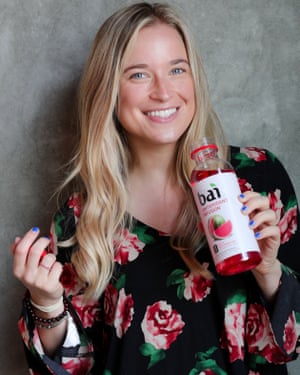
Almost as soon as it became ubiquitous, clean eating sparked a backlash. By 2015, Nigella Lawson was speaking for many when she expressed disgust at clean eating as a judgmental form of body fascism. Food is not dirty, Lawson wrote. Clean eating has been attacked by critics such as the baker and cookbook author Ruby Tandoh (who wrote a much-shared article on the subject in Vice magazine in May 2016) for being an incitement to eating disorders.
Others have pointed out that, as a method of healthy eating, its founded on bad science. In June, the American Heart Association suggested that the coconut oil beloved as a panacea by clean eaters actually had no known offsetting favourable effects, and that consuming it could result in higher LDL cholesterol. A few weeks later, Anthony Warner a food consultant with a background in science who blogs as The Angry Chef published a book-length assault on the science of clean eating, calling it a world of quinoa bowls and nutribollocks fuelled by the modern information age.
When Dr Giles Yeo, a geneticist at the University of Cambridge, presented an episode of the BBCs Horizon this year that examined the scientific evidence for different schools of clean eating, he found everything from innocuous recipes to serious malpractice.
He reported on the alkaline diet of Dr Robert O Young, who peddled the idea that disease is caused by eating acidic foods. After being diagnosed with terminal cancer in her 20s, Naima Houder-Mohammed, an officer in the British army, paid Young more than $77,000 for treatment (including meals of avocado, which Young calls Gods butter) at his pH miracle ranch in the US in 2012. She died later that year. Separately, Young was jailed in June this year after being convicted of charges including practising medicine without a licence. While he may represent an extreme case, it is clear that many wellness gurus, as Yeos programme concluded, tell a troubling narrative founded on falsehoods.
As the negative press for clean eating has intensified over the past year, many of the early goddesses of #eatclean have tried to rebrand declaring they no longer use the word clean to describe the recipes that have sold them millions of books. Ella Mills AKA Deliciously Ella, the food writer and entrepreneur whose coconut-and-oat energy balls sell for 1.79 apiece in British supermarkets said on Yeos Horizon programme that she felt that the word clean as applied to eating originally meant nothing but natural, real, unprocessed food. Now, it means diet, it means fad, she complained.
But however much the concept of clean eating has been logically refuted and publicly reviled, the thing itself shows few signs of dying. Step into the cookbook section of any book shop and you will see how many recipe writers continue to promise us inner purity and outer beauty. Even if you have never knowingly tried to eat clean, its impossible to avoid the trend altogether, because it changed the foods available to all of us, and the way they are spoken of.
Avocados now outsell oranges in the UK. Susi Richards, head of product development at Sainsburys supermarkets, told me earlier this year that she had been taken aback by the pace at which demand for products fitting with the clean eating lifestyle have grown in the UK. Families who would once have eaten potato waffles are now experimenting with lower carb butternut squaffles (slices of butternut squash cut to resemble a waffle). Nutribullets a brand of compact blenders designed for making supposedly radiance-bestowing juices and smoothies are now mentioned in some circles as casually as wooden spoons.
Why has clean eating proved so difficult to kill off? Hadley Freeman, in this paper, identified clean eating as part of a post-truth culture, whose adherents are impervious, or even hostile, to facts and experts. But to understand how clean eating took hold with such tenacity, its necessary first to consider just what a terrifying thing food has become for millions of people in the modern world. The interesting question is not whether clean eating is nonsense, but why so many intelligent people decided to put their faith in it.
We are not the only generation to have looked in disgust at an unhealthy food environment and wished that we could replace it with nutrients that were perfectly safe to eat. In the 1850s, a British chemist called Arthur Hill Hassall became convinced that the whole food supply of London was riddled with toxins and fakery. Whats more, he was right. Hassall had done a series of investigations for the medical journal the Lancet, and found that much of what was for sale as food and drink was not what it seemed: coffee made from burnt sugar and chicory; pickles dyed green with poisonous copper colourings.
Years of exposing the toxic deceptions all around him seems to have driven Hassall to a state of paranoia. He started to see poison everywhere, and decided that the answer was to create a set of totally uncontaminated food products. In 1881, he set up his own firm, The Pure Food Company, which would only use ingredients of unimpeachable quality. Hassall took water that was softened and purified and combined it with the finest Smithfield beef to make the purest beef jelly and disgusting-sounding fibrinous meat lozenges the energy balls of Victorian England. The Pure Food Company of 1881 sounds just like a hundred wellness food businesses today except for the fact that it collapsed within a year due to lack of sales.
We are once again living in an environment where ordinary food, which should be something reliable and sustaining, has come to feel noxious. Unlike the Victorians, we do not fear that our coffee is fake so much as that our entire pattern of eating may be bad for us, in ways that we cant fully identify. One of the things that makes the new wave of wellness cookbooks so appealing is that they assure the reader that they offer a new way of eating that comes without any fear or guilt.
The founding principle of these modern wellness regimes is that our current way of eating is slowly poisoning us. Much of the food on offer to us today is nutritionally substandard, write the Hemsley sisters, best-selling champions of nutrient-dense food. Its hard to disagree with the proposition that modern diets are generally substandard, even if you dont share the Hemsleys solution of going grain-free. All of these diets have a kernel of truth that is spun out into some bigger fantasy, Giles Yeo says hence their huge appeal.
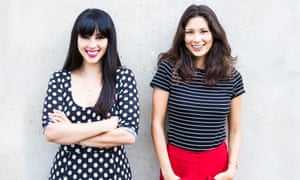
Clean eating whether it is called that or not is perhaps best seen as a dysfunctional response to a still more dysfunctional food supply: a dream of purity in a toxic world. To walk into a modern western supermarket is to be assailed by aisle upon aisle of salty, oily snacks and sugary cereals, of bread that has been neither proved nor fermented, of cheap, sweetened drinks and meat from animals kept in inhumane conditions.
In the postwar decades, most countries in the world underwent what the professor of nutrition Barry Popkin calls a nutrition transition to a westernised diet high in sugar, meat, fat, salt, refined oils and ultra-processed concoctions, and low in vegetables. Affluence and multi-national food companies replaced the hunger of earlier generations with an unwholesome banquet of sweet drinks and convenience foods that teach us from a young age to crave more of the same. Wherever this pattern of eating travelled, it brought with it dramatic rises in ill health, from allergies to cancer.
In prosperous countries, large numbers of people whether they wanted to lose weight or not became understandably scared of the modern food supply and what it was doing to our bodies: type 2 diabetes, obesity and cardiovascular disease, not to mention a host of other complaints that are influenced by diet, ranging from Alzheimers to gout. When mainstream diets start to sicken people, it is unsurprising that many of us should seek other ways of eating to keep ourselves safe from harm. Our collective anxiety around diet was exacerbated by a general impression that mainstream scientific advice on diet inflated by newspaper headlines could not be trusted. First these so-called experts tell us to avoid fat, then sugar, and all the while people get less and less healthy. What will these experts say next, and why should we believe them?
Into this atmosphere of anxiety and confusion stepped a series of gurus offering messages of wonderful simplicity and reassurance: eat this way and I will make you fresh and healthy again. It is very hard to pinpoint the exact moment when clean eating started, because it is not so much as a single diet as a portmanteau term that has borrowed ideas from numerous pre-existing diets: a bit of Paleo here, some Atkins there, with a few remnants of 1960s macrobiotics thrown in for good measure.
But some time in the early 2000s, two distinct but interrelated versions of clean eating became popular in the US one based on the creed of real food, and the other on the idea of detox. Once the concept of cleanliness had entered the realm of eating, it was only a matter of time before the basic idea spread contagiously across Instagram, where fans of #eatclean could share their artfully photographed green juices and rainbow salad bowls.
The first and more moderate version of clean food started in 2007, when Tosca Reno, a Canadian fitness model, published a book called The Eat-Clean Diet. In it, Reno described how she lost 34kg (75lb) and transformed her health by avoiding all over-refined and processed foods, particularly white flour and sugar. A typical Reno eat-clean meal might be stir-fried chicken and vegetables over brown rice; or almond-date biscotti with a cup of tea. In many ways The Eat-Clean Diet was like any number of diet books that had come before, advising plenty of vegetables and modestly portioned, home-cooked meals. The difference, which Anthony Warner calls a piece of genius on Renos part, was that she did not call it a diet at all, but a holistic way of living.
Meanwhile, a second version of clean eating was spearheaded by a former cardiologist from Uruguay called Alejandro Junger, the author of Clean: The Revolutionary Program to Restore the Bodys Natural Ability to Heal Itself, which was published in 2009 after Jungers clean detox system had been praised by Gwyneth Paltrow on her Goop website. Jungers system was far stricter than Renos, requiring, for a few weeks, a radical elimination diet based on liquid meals and a total exclusion of caffeine, alcohol, dairy and eggs, sugar, all vegetables in the nightshade family (tomatoes, aubergines and so on), red meat (which, according to Junger, creates an acidic inner environment), among other foods. During this phase, Junger advised a largely liquid diet either composed of home-made juices and soups, or of his own special powdered shakes. After the detox period, Junger advised very cautiously reintroducing toxic triggers such as wheat (a classic trigger of allergic responses) and dairy (an acid-forming food).
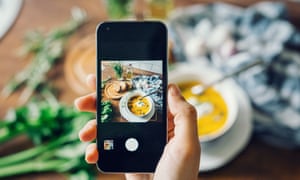
To read Jungers book is to feel that everything edible in our world is potentially toxic. Yet, as with Arthur Hassall, many of Jungers fears may be justified. Junger writes as a doctor with first-hand knowledge of diet-related epidemics of cancer, cardiovascular disease, diabetes and autoimmune disease. The book is full of case studies of individuals who follow Jungers detox and emerge lighter, leaner and happier. Who is the candidate for using this program? Junger asks, replying: Everyone who lives a modern life, eats a modern diet and inhabits the modern world.
To my surprise, I found myself compelled by the messianic tone of Jungers Clean though not quite compelled enough to pay $475 for his 21-day programme (which, in any case, doesnt ship outside of North America), or to give up my daily breakfast of inflammatory coffee, gut-irritating sourdough toast and acid-forming butter, on which I feel surprisingly well. When I told Giles Yeo how seductive I found Jungers words, almost despite myself, he said: This is their magic! They are all charismatic human beings. I do think the clean-eating gurus believe in it themselves. They drink the Koolaid.
Over the past 50 years, mainstream healthcare in the west has been inexplicably blind to the role that diet plays in preventing and alleviating ill health. When it started, #eatclean spoke to growing numbers of people who felt that their existing way of eating was causing them problems, from weight gain to headaches to stress, and that conventional medicine could not help. In the absence of nutrition guidance from doctors, it was a natural step for individuals to start experimenting with cutting out this food or that.
From 2009 to 2014, the number of Americans who actively avoided gluten, despite not suffering from coeliac disease, more than tripled. It also became fashionable to drink a whole pantheon of non-dairy milks, ranging from oat milk to almond milk. I have lactose-intolerant and vegan friends who say that #eatclean has made it far easier for them to buy ingredients that they once had to go to specialist health-food stores to find. What isnt so easy now is to find reliable information on special diets in the sea of half-truths and bunkum.
Someone who observed how quickly and radically #eatclean changed the market for health-food books is Anne Dolamore, a publisher at the independent food publishers Grub Street, based in London. Dolamore has been publishing health-related food books since 1995, a time when free-from cooking was a tiny subculture. In the days before Google, Dolamore who has long believed that food is medicine felt that books on special diets by authors with proper credentials could serve a useful purpose. In 1995, Grub Street published The Everyday Diabetic Cookbook, which has since sold over 100,000 copies in the UK. Other successful books followed, including The Everyday Wheat-Free and Gluten-Free Cookbook by Michelle Berriedale-Johnson, published in 1998.
In 2012, the market for wellness cookbooks in the UK suddenly changed, starting with the surprise success of Honestly Healthy by Natasha Corrett and Vicki Edgson, which sold around 80,000 copies. Louise Haines, a publisher at 4th Estate, recalls that the previous big trend in British food publishing had been baking, but the baking boom died overnight, virtually, and a number of sugar-free books came through.
At Grub Street, Anne Dolamore watched aghast as bestselling cookbooks piled up from a never-ending stream of blonde, willowy authorities, many of whom seemed to be devising diets based on little but their own limited experience. If Junger and Reno laid the groundwork for eat clean to become a vast global trend, it was social media and the internet that did the rest. Almost all of the authors of the British clean eating bestsellers started off as bloggers or Instagrammers, many of them beautiful women in their early 20s who were genuinely convinced that the diets they had invented had cured them of various chronic ailments.
Every wellness guru worth her Himalayan pink salt has a story of how changing what you eat can change your life. Food has the power to make or break you, wrote Amelia Freer in her 2014 bestseller Eat. Nourish. Glow. (which has sold more than 200,000 copies). Freer was leading a busy life as a personal assistant to the Prince of Wales when she realised that her tummy looked and felt as if it had a football in it from too many snatched dinners of cheese on toast or factory-made food. By giving up processed and convenience foods (margarine, yuck!) along with gluten and sugar, Freer claimed to have found the secrets to looking younger and feeling healthier.
Perhaps the best-known diet-transformation story of all is that of Ella Mills possessor of more than a million Instagram followers. In 2011, Mills was diagnosed with postural tachycardia syndrome, a condition characterised by dizziness and extreme fatigue. Mills began blogging about food after discovering that her symptoms radically improved when she swapped her sugar-laden diet for plant-based, natural foods. Mills who used to be a model made following a free-from diet seem not drab or deprived, but deeply aspirational. By the time her first book appeared in January 2015, her vast following on social media helped her to sell 32,000 copies in the first week alone.

There was something paradoxical about the way these books were marketed. What they were selling purported to be an alternative to a sordidly commercial food industry. If its got a barcode or a promise, dont buy it, wrote Freer. Yet clean eating is itself a wildly profitable commercial enterprise, promoted using photogenic young bloggers on a multi-billion-dollar tech platform. Literary agent Zoe Ross tells me that around 2015 she began to notice that the market was scouring Instagram for copycat acts specifically very pretty, very young girls pushing curated food and lifestyle.
After years on the margins, health-based cooking was finally getting a mass audience. In 2016, 18 out the 20 top sellers in Amazon UKs food and drink book category had a focus on healthy eating and dieting. The irony, however, was that the kind of well-researched books Dolamore and others once published no longer tended to sell so well, because health publishing was now dominated by social media celebrities. Bookshops were heaving with so many of these clean books that even the authors themselves started to feel that there were too many of them. Alice Liveing, a 23-year-old personal trainer who writes as Clean Eating Alice, argued in her 2016 book Eat Well Every Day that she was championing what I feel is a much-needed breath of fresh air in what I think is an incredibly saturated market. To my untrained eye, browsing through her book, Alices fresh approach to diet looked very similar to countless others: date and almond energy balls, kale chips, beetroot and feta burgers.
Then again, shouldnt we give clean eating due credit for achieving the miracle of turning beetroot and kale into objects of desire? Data from analysts Kantar Worldpanel show that UK sales of fresh beetroot have risen dramatically from 42.8m in 2013 to 50.5m in 2015. Some would argue that, in developed nations where most people eat shockingly poor diets, low in greens and high in sugar, this new union of health and food has done a modicum of good. Giles Yeo who spent some time cooking a spicy sweet-potato dish with Ella Mills for his BBC programme agrees that many of the clean eating recipes he tried are actually a tasty and cool way to cook vegetables. But why, Yeo asks, do these authors not simply say I am publishing a very good vegetarian cookbook and stop there, instead of making larger claims about the power of vegetables to beautify or prevent disease? The poison comes from the fact that they are wrapping the whole thing up in pseudoscience, Yeo says. If you base something on falsehoods, it empowers people to take extreme actions, and this is where the harm begins.
You cant found a new faith system with the words I am publishing a very good vegetarian cookbook. For this, you need something stronger. You need the assurance of make-believe, whispered sweetly. Grind this cauliflower into tiny pieces and you can make a special kind of no-carb rice! Avoid all sugar and your skin will shimmer! Among other things, clean eating confirms how vulnerable and lost millions of us feel about diet which really means how lost we feel about our own bodies. We are so unmoored that we will put our faith in any master who promises us that we, too, can become pure and good.
I can pinpoint the exact moment that my own feelings about clean eating changed from ambivalence to outright dislike. I was on stage at the Cheltenham literary festival with dietician Renee McGregor (who works both with Olympic athletes and eating disorder sufferers) when a crowd of around 300 clean-eating fans started jeering and shouting at us. We were supposedly taking part in a clean-eating debate with nutritionist Madeleine Shaw, author of Get the Glow and Ready Steady Glow.
Before that week, I had never read any of Shaws work. As I flicked through Ready Steady Glow, I was fairly endeared by the upbeat tone (stop depriving yourself and start living) and bright photos of a beaming Shaw. I often surprise myself by finding new things to spiralise she writes, introducing a sweet potato noodle salad. Cauliflower pizza, in her view, is quite simply: the best invention ever.
But underneath the brightness there were notes of restriction that I found both worrying and confused. As ever, all my recipes are sugar-and-wheat free, Shaw announces, only to give a recipe for gluten-free brownies that contains 200g of coconut sugar, a substance that costs a lot more than your average white granulated sugar, but is metabolised by the body in the same way. I was still more alarmed by step four in Shaws nine-point food philosophy, which says that all bread and pasta should be avoided: they are beige foods, which are full of chemicals, preservatives and genetically modified wheat, and not whole foods. Shaws book makes no distinction between a loaf of, say, bleached sliced white, and a homemade wholemeal sourdough.
When we met on stage in Cheltenham, I asked Shaw why she told people to cut out all bread, and was startled when she denied she had said any such thing (rye bread was her favourite, she added). McGregor asked Shaw what she meant when she wrote that people should try to eat only clean proteins; meat that was not deep-fried was her rather baffling reply. McGregors main concern about clean eating, she added, was that as a professional treating young people with eating disorders, she had seen first-hand how the rules and restrictions of clean eating often segued into debilitating anorexia or orthorexia.
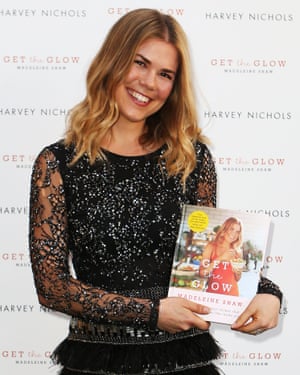
But I only see the positive, said Shaw, now wiping away tears. It was at this point that the audience, who were already restless whenever McGregor or I spoke, descended into outright hostility, shouting and hissing for us to get off stage. In a book shop after the event, as fans came up to Shaw to thank her for giving them the glow, I too burst into tears when one person jabbed her fingers at me and said I should be ashamed, as an older women (I am 43), to have criticised a younger one. On Twitter that night, some Shaw fans made derogatory comments about how McGregor and I looked, under the hashtag #youarewhatyoueat. The implication was that, if we were less photogenic than Shaw, we clearly had nothing of any value to say about food (never mind the fact that McGregor has degrees in biochemistry and nutrition).
Thinking about the event on the train home, I realised that the crowd were angry with us not because they disagreed with the details (its pretty clear that you cant have sugar in sugar-free recipes), but because they disliked the fact that we were arguing at all. To insist on the facts made us come across as cruelly negative. We had punctured the happy belief-bubble of glowiness that they had come to imbibe from Shaw. Its striking that in many of the wellness cookbooks, mainstream scientific evidence on diet is seen as more or less irrelevant, not least because the gurus see the complacency of science as part of what made our diets so bad in the first place.
Amelia Freer, in Eat. Nourish. Glow, admits that we cant prove that dairy is the cause of ailments ranging from IBS to joint pain, but concludes that its surely worth cutting dairy out anyway, just as a precaution. In another context, Freer writes that Im told it takes 17 years for scientific knowledge to filter down to become general knowledge, while advising that gluten should be avoided. Once we enter the territory where all authority and expertise are automatically suspect, you can start to claim almost anything and many #eatclean authorities do.
That night in Cheltenham, I saw that clean eating or whatever name it now goes under had elements of a post-truth cult. As with any cult, it could be something dark and divisive if you got on the wrong side of it. After Giles Yeos BBC programme was aired, he told me he was startled to find himself subjected to relentless online trolling. They said I was funded by big pharma, and therefore obviously wouldnt see the benefits of a healthy diet over medicine. These were outright lies. (Yeo is employed by the University of Cambridge, and funded by the Medical Research Council.)
Its increasingly clear that clean eating, for all its good intentions, can cause real harm, both to truth and to human beings. Over the past 18 months, McGregor says, every single client with an eating disorder who walks into my clinic doors is either following or wants to follow a clean way of eating.
In her new book, Orthorexia, McGregor observes that while eating disorders long predate the #eatclean trend, food rules (such as eating no dairy or avoiding all grains) easily become a guise for restricting food intake. Moreover, they are not even good rules, based as they are on unsubstantiated, unscientific claims. Take almond milk, which is widely touted as a superior alternative to cows milk. McGregor sees it as little better than expensive water, containing just 0.1g protein per 100ml, compared with 3.2g per 100ml in cows milk. But she often finds it very difficult to convince her clients that restricting themselves to these clean foods is in the long run worse for their health than what she calls unrestrained eating balanced and varied meals, but no panic about the odd ice cream or chocolate bar.
Clearly, not everyone who bought a clean-eating book has developed an eating disorder. But a movement whose premise is that normal food is unhealthy has now muddied the waters of healthy eating for everyone else, by planting the idea that a good diet is one founded on absolutes.
The true calamity of clean eating is not that it is entirely false. It is that it contains a kernel of truth, as Giles Yeo puts it. When you strip down all the pseudo babble, they are absolutely right to say that we should eat more vegetables, less refined sugar and less meat, Yeo said, sipping a black coffee in his office at the Institute of Metabolic Science in Cambridge, where he spends his days researching the causes of obesity. Yeo agrees with the clean eaters that our environment of cheap, plentiful, sugary, fatty food is a recipe for widespread obesity and ill health. The problem is its near impossible to pick out the sensible bits of clean eating and ignore the rest. #Eatclean made healthy eating seem like something expensive, exclusive and difficult to achieve, as Anthony Warner writes. Whether the term clean is used or not, there is a new puritanism about food that has taken root very widely.
A few weeks ago, I overheard a fit, middle-aged man at the gym berating a friend for not eating a better diet a conversation that would once have been unimaginable among men. The first man was telling the second that the skinny burgers he preferred were nothing but shitty mince and marketing and arguing that he could get almost everything he needed from a diet of vegetables, cooked with no oil. Fat is fat, at the end of the day, he concluded, before bemoaning the idiots who tried to eat something wholesome like a salad, then ruined it by adding salt. If you have one bad diet day a week, you undo all your good work.
The real question is how to fight this kind of diet absolutism without bouncing back to a mindless celebration of the modern food environment that is demonstrably making so many people sick. In 2016, more than 600 children in the UK were registered as living with type 2 diabetes; before 2002, there were no reported cases of children suffering from the condition, whose causes are diet-related.
Our food system is in desperate need of reform. Theres a danger that, in fighting the nonsense of clean eating, we end up looking like apologists for a commercial food supply that is failing in its basic task of nourishing us. Former orthorexia sufferer Edward L Yuen has argued in his 2014 book, Beating Orthorexia that the old advice of everything in moderation no longer works in a food environment where eating in the middle ground may still leave you with chronic diseases. When portions are supersized and Snickers bars are sold by the metre (something I saw in my local Tesco recently), eating normally is not necessarily a balanced option. The answer isnt yet another perfect diet, but a shift in our idea of what constitutes normal food.
Sales of courgettes in the UK soared 20% from 2014 to 2015, fuelled by the rise of the spiraliser. But overall consumption of vegetables, both in the UK and worldwide, is still vanishingly small (with 74% of the adult UK population not managing to eat five a day). That is much lower than it was in the 1950s, when freshly cooked daily meals were still something that most people took for granted.
Among the affluent classes who already ate a healthier-than-average diet, the Instagram goddesses created a new model of dietary perfection to aim for. For the rest of the population, however, it simply placed the ideal of healthy food ever further out of reach. Behind the shiny covers of the clean-eating books, there is a harsh form of economic exclusion that says that someone who cant afford wheatgrass or spirulina can never be truly well.
As the conversation I overheard in the gym illustrates, this way of thinking is especially dangerous because it obscures the message that, in fact, small changes in diet can have a large beneficial impact. If you think you cant be healthy unless you eat nothing but vegetables, you might miss the fact that (as a recent overview of the evidence by epidemiologists showed) there are substantial benefits from raising your fruit-and-veg intake from zero portions a day to just two.
Among its many other offences, clean eating was a series of claims about food that were all or nothing which only serves to underline the fact that most people, as usual, are stuck with nothing.
Main photograph: Alamy
Follow the Long Read on Twitter at @gdnlongread, or sign up to the long read weekly email here.
Read more here: http://www.theguardian.com/us
